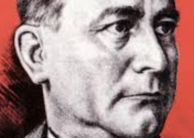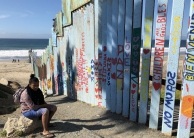Featured Article:The Bush Administration Torture Policy: Origins and Consequences
By
2010, Vol. 2 No. 08 | pg. 1/1
IN THIS ARTICLE
IntroductionIn March of 2002, US intelligence and law enforcement agents, in collaboration with Pakistani security forces, raided a compound in Faisalabad, Pakistan, where they captured the first “high value detainee” in the War on Terror. Their target, Abu Zubayda, was the alleged logistics chief of Al Qaeda, an organization he joined after teaming up with the jihad against the Soviet Union during their war in Afghanistan. In the raid, he suffered three gunshot wounds, but remarkably survived; but he continued to suffer complications from them long afterward. In any event, the United States believed he possessed critical information about Al Qaeda operations and possibly the location of Osama bin Laden, who had recently escaped during the Battle of Tora Bora in December.1 Though the circumstances of his treatment remain thickly veiled in secrecy, it is known Zubayda was eventually flown to a CIA black site in Udorn, Thailand. There, he was subject to harsh interrogation techniques, some of which had been reverse-engineered from the Army’s Survival, Evasion, Resistance, Escape (SERE) program—a program developed to teach US forces at high risk of capture how to “resist various forms of torture and other extreme forms of abuse.”2 At the black site, Zubayda was forced into a wooden box that was not tall enough for him to sit up straight and made to stay there for extended periods of time, occasionally overnight.3 After being placed inside, a blanket would be placed on top of the box, which cut out air circulation and made the box hot and sweaty. Since the box was so small, Zubayda was forced into uncomfortable positions, and, the wounds he suffered during his capture would occasionally reopen.4 The purpose of this treatment, according to James Mitchell, the psychologist on contract with the CIA to provide advising on interrogation techniques, was the need to treat him “like a dog in a cage.”5 When CIA director George Tenet explained to the President that Zubayda’s sedation from painkillers was interfering with the CIA’s intelligence gathering, the President reportedly retorted, “Who authorized putting him on pain medication?”6Secret Justice Department memoranda, released in April 2009 by the Obama Administration, would later prove the extent of the techniques used on Zubayda and others. In the May 30, 2005 memo, it was revealed that during his confinement, Zubayda had been waterboarded 83 times.7 The process, described thoroughly in Jane Mayer’s The Dark Side, involved strapping Zubayda down with restraints on a gurney-like table, putting a cloth over his head, and pouring water over the cloth to create the experience of drowning. In order to prevent adverse effects, the table was calibrated so it could be adjusted into a vertical position, which according to Zubayda caused the straps to put so much pressure on his wounds that the pain made him vomit. The repeated uses of this technique were so traumatic Zubayda would at times urinate on himself.8 The capture of Abu Zubayda as one of the first high-value detainees in the War on Terror was one of the driving forces behind the formulation of the administration’s policy on harsh interrogation techniques. But his capture and treatment do not tell the entire story. Though the accounts of his and other detainee treatment may be shudder inducing, one of the most important developments during the Bush presidency was the outcome from deliberations among senior administration officials just after September 11th on the handling of detainees captured during the War on Terror. The executive actions that followed provided the Bush administration’s interpretation of some of the earliest foundational principles of America’s constitutional system, one founded on traditions of separation of powers, due process, and the rule of law. Understanding of these early decisions is crucial to grasping the administration’s reshaping of America’s long-held principles and values in fighting the War on Terror. Above all, this paper strives to answer a simple question: How did we get here? The decision-making process on the subject of detainee treatment is perhaps best understood through two key events that occurred in the second year of the Bush presidency: the President’s February 7, 2002 memorandum of understanding vacating the Geneva Conventions, and the legal memos issued by the OLC on August 1st, 2002. To say nothing of the actual consequences of these documents, there truly is no better authoritative source for the administration’s interpretation of the two most applicable legal obligations on the subject of detainee treatment. As such, the bulk of this paper will be devoted tracing the decision making-process that led to the administration’s interpretation of these two legal obligations, the Geneva Convention of 1949, and the UN Convention Against Torture. While the decision-making process is central to understanding the foundation of the administration’s detainee policy, it tells us nothing of its implications. Inherently, the consequences of these documents need at least some discussion, and mine will focus on taking a look at some of the forces unleashed on organizations that seek to professionalize the use of torture, and discuss in particular how those forces manifested in US detainee policy. I will then conclude briefly by providing some thoughts on where we should go know, knowing the problems that have arisen during the War on Terror remain largely unresolved. Redefining TortureThere are a number of international and domestic statutory provisions that apply to the treatment of prisoners of war or other detainees during periods of armed conflict. During their attempts to interpret these provisions in the wake of the September 11th attacks, the ones that drew considerable attention among administration officials were the Geneva Convention of 1949, the UN Convention Against Torture and Other Cruel Inhuman or Degrading Treatment, and the domestic codification of the Convention Against Torture, 18 U.S.C §§ 2340-2340A. The locus for renewed interpretation of these legal obligations came when US forces began capturing Taliban and al-Qaeda personnel in December 2001. Soon afterward, the Department of Defense, Justice Department, and White House legal team began to consider the application of the Geneva Conventions in the War on Terror.9 The President eventually signed an executive order outlining his understanding of the applicability of the Geneva Conventions, but the story of how the President came to sign that order deserves mentioning, as the various camps that emerged on either side of the order would continue to define the sources of contention within the administration for years to come. The Geneva Conventions The story of the Bush administration’s interpretation on the applicability of the Geneva Conventions in the War on Terror begins decades earlier with the administration’s Undersecretary of Defense for Policy, Douglas Feith, Feith had an extensive background working on national security policy in Washington, and he first gained attention in this area in the 1980’s when he served in the Reagan administration. At the time, he argued that terrorists did not deserve protection under the Geneva Conventions—a decision that was rooted in the passionate Zionist’s desire to oppose protection of anti-Israeli terrorists.10 His background on the subject made him a valuable player early on in the process, and his significant role throughout the course of the deliberations can be symbolized by his making of the final pitch to the President on the order to vacate the Conventions; which he later recounted to Philippe Sands in the book Torture Team.11 Feith was one of the “earliest and most ardent supporters” of the new interpretation of the applicability of Geneva; an interpretation which denied POW status to members of the Taliban and al Qaeda on the basis that they were ‘illegal enemy combatants” not covered by the Conventions, and that because Afghanistan was a “failed state” it was no longer a party to the Conventions it had signed.12 It may come as a surprise that in the beginning United States Central Command proceeded on the basis that Geneva applied after it started capturing al-Qaeda and Taliban forces in Afghanistan. This approach governed the initial treatment of detainees like John Walker Lindh and David Hicks, who were American and Australian nationals.13 The legal memos that laid the foundation for the shift away from the Geneva Conventions—a shift supported by many in the administration and pioneered by Feith—were a result of misgivings by the so-called “War Council” of David Addington, Jim Haynes, John Yoo, Tim Flanigan, and Alberto Gonzales about applying the Conventions to al Qaeda terrorists once they had been caught by the US. They were especially concerned with the “conundrum,” as Associate White House Counsel Bradford Berenson called it, of the lack of options they had in handling the members: the administration was not able to execute those they captured, release them, or bring them into the criminal justice system, which they viewed as jeopardizing national security.14 These concerns were first articulated concretely in a January 9, 2002 draft memo from the Office of Legal Counsel to Jim Haynes, top lawyer at the Pentagon, and provide the first point at which the push to abandon Geneva Convention applicability really gains steam. The January 9th draft memo, written by John Yoo and Robert J. Delahunty, was one of the first internal documents after the onset of the War on Terror to conclude that the Geneva Conventions did not apply to al Qaeda terrorists or the Taliban. The author’s reasoning in denying these protections revolved around two separate arguments, one specific to each al Qaeda and the Taliban. First, with regard to al Qaeda, they reasoned that the organization was a new kind of enemy, and because it was not a state, one that could not be party to the international agreements that apply in armed conflicts among states. In addition, the Taliban was a militia in a “failed state,” and though Afghanistan had signed the Conventions, because of this declaration the Taliban could no longer claim their protection.15 The OLC advice was quickly taken to heart by the Defense Department, where Defense Secretary Rumsfeld issued a memo to the Joint Chiefs of Staff on January 19, 2002, declaring individuals under control of the Defense Department were not entitled to prisoner of war status under the 1949 Conventions.16 Though it appears from these descriptions the process of reinterpreting the applicability of the Geneva Conventions was going smoothing, the understanding among many senior officials on applicability was not without detractors. At the State Department, which was host to many of the later foes of other senior administration officials, could lay claim to much of the discontent. William Howard Taft IV, Colin Powell’s legal advisor and great-grandson of the former president, penned a forty-page memo two days after the OLC draft memo to John Yoo which argued Yoo’s analysis was “seriously flawed,” “untenable,” “incorrect,” and “confused,” and that it could open up the President to prosecution for war crimes.17 Another former State official said, “There is no such thing as a non-covered person under the Geneva Conventions. …The protocols cover fighters in everything from world wars to local rebellions.”18 The Vice President’s office sought to preempt Powell and the State Department from dissuading the President by authoring a memo signed by the President’s lawyer, Alberto Gonzales. That infamous January 25th memo argued that the War on Terrorism was a “new kind of war” that places a “high premium” on the “ability to quickly obtain information from captured terrorists.” Thusly, “this new paradigm renders obsolete” Geneva’s interrogation prohibitions and renders the provisions placing limitations on the conditions under which to keep detainees “quaint.”19 The battle over the Geneva Conventions, that as a corollary initiated what would become a longstanding division on policy within the administration between the departments of Defense and State, was finally resolved with the issuance of a classified memorandum of understanding by the President on February 7, 2002. The final pitch for this decision, as mentioned before, came from the Undersecretary of Defense, Douglas Feith. In his memo to the Vice President, Secretary of State, and other top-level officials, the President agreed with the proponents of suspending Geneva. With this decision, the executive branch adopted the view that they would now operate under the “new paradigm of war,” under which the laws of war would need to be reconsidered. Geneva would be suspended, and the United States Armed Forces would only have to treat detainees humanely “to the extent appropriate and consistent with military necessity.”20 With the abandonment of Geneva Convention applicability, the Bush administration gained the flexibility to hold detainees for indefinite periods of time, as the United States was no longer required to hold Article 5 tribunals to determine the status of detainees. The memorandum of understanding authored by the President confirmed an earlier decision by Rumsfeld in January to rescind an order by General Tommy Franks, commander of the Coalition Forces, and stop holding such tribunals.21 The August 1st Memos The decision on the Geneva Conventions only provided a limited amount of wiggle room for the administration, and it did not give any specific guidance as to the applicability of domestic law with regard specific “enhanced” interrogation techniques. Shortly after the capture of the first high-value detainee, Abu Zubayda, the administration again turned to Yoo for clarification on the legal permissibility of certain types of interrogation methods, specifically with regard to a CIA wish list of “stress techniques.”22 The CIA, which had selected to spearhead intelligence gathering from interrogations, sought to use tougher interrogation methods after Zubayda proved insufficiently forthcoming—but it was apprehensive about “taking the gloves off” without adequate legal cover. By pursuing approval of certain techniques from the OLC, the CIA was seeking for itself and the Defense Department what amounted to “effectively an advanced pardon for actions taken at the edges of vague criminal laws.”23 The “golden shield” arrived for the interrogators on August 1, 2002, with two memos largely authored by John Yoo and signed by Assistant Attorney General Jay Bybee. The memos dealt with interpretations of the domestic codification of the UN Convention Against Torture, which was ratified with domestic provisions in 1994, and with particular interrogation techniques the CIA asked the OLC to review. The unclassified memo released in 2004 sent to Alberto Gonzales provided the OLC’s interpretations 18 U.S.C. §§ 2340-2340A the domestic law that contains the definition of torture. The memo concluded that acts of interrogation must be of “an extreme nature” to fit the definition in Section 2340A. It interpreted “severe physical pain” in the statute to mean it “must be the equivalent in intensity to the pain accompanying serious physical injury, such as organ failure, impairment of bodily function, or even death.” Additionally, mental pain and suffering would have to “result in significant psychological harm of significant duration, e.g., lasting for months or even years.”24 The second August 1, 2002 memo was kept secret until its released by the Obama administration on April 16, 2009. This memo, addressed to John Rizzo, specifically approved a set of “enhanced” interrogation techniques the CIA had submitted for review. After review, the OLC approved ten techniques: “(l) attention grasp, (2) walling, (3) facial hold, (4) facial slap (insult slap), (5) cramped confinement, (6) wall standing, (7) stress positions, (8) sleep deprivation, (9) insects placed in a confinement box, and (10) the waterboard.”25 The August 2002 memos have been the subjects of significant criticism, with many arguing that they were formulated to mainly to protect government officials if they engaged in interrogation methods of questionable legal permissibility. As David Cole, professor of law at Georgetown University, writes: Rather than offer a nuanced evaluation of completing claims about the legality of the methods in question, every argument was clearly motivated by the desire to protect Cabinet-level officials and CIA agents from prosecution if they subjected Abu Zubayda to a series of increasingly brutal interrogation techniques. According to Jack Goldsmith, the successor to Jay Bybee as head of the Office of Legal Counsel, “CIA interrogators and their supervisors viewed the opinion[s] as a ‘golden shield’ …that provided enormous comfort.”26 Jack Goldsmith also writes that these memos provided a large part of the legal basis the administration used to apply “enhanced” interrogation techniques to Abu Zubayda and Khalid Sheikh Mohammad, the 9/11 mastermind.27 In doing so, they used a definition that Goldsmith averred was “too narrowly” interpreted, with the definition of “severe pain” in particular “not even in the ballpark.”28 Martin Lederman, a former OLC lawyer, called parts of the decision “completely unsupported by, and contrary to, the plain words on the statute.”29 Howard Koh, dean of the Yale Law School, called the first memo “perhaps the most clearly erroneous legal opinion I have ever read.”30 It also seemed as though the memos were tailored to a preconceived policy goal rather than as means to more deeply understand the limits of the statute. The President himself seemingly admitted that the torture memos were authored after the CIA started using some of the enhanced interrogation techniques on Abu Zubayda. In a 2006 speech in which he also formally acknowledge the existence of the CIA’s secret prisons, he stated: We knew that Zubayda had more information that could save innocent lives, but he stopped talking. …And so the CIA used an alternative set of procedures. …The Department of Justice reviewed the authorized methods extensively and determined them to be lawful.31 According to a report released by Senator Jay Rockefeller, head of the Senate Intelligence Committee, the Justice Department memo only served “memorialize” conclusions reached at a meeting with the CIA over interrogation methods in July of 2002, when the OLC orally advised the CIA that the Attorney General had concluded techniques like waterboarding were lawful.32 ConsequencesIt is not enough to look at the executive actions that authorized the harsh interrogation techniques used in the War on Terror if we are seeking to gain a full understanding of the administration’s torture policy. Indeed, the documents only tell half the story, and it is necessary to look at least at some level at the practices and applications these documents initiated. The August 1st memos and February 7th memorandum of understanding from President Bush authorized the use of enhanced interrogation techniques in the War on Terror explicitly, through the language of the memorandum and the OLC interpretations, and latently, through the wiggle room and loopholes contained within these documents. Martin Lederman, a former senior advisor for the Office of Legal Counsel and now serving in it under the Obama administration, observed that the definition of torture in the statute was interpreted so as “to narrowly define torture almost into non-existence.”33 Even administration officials conceded the interpretation of the statute’s definition of torture in the August 1st memos was lacking—Michael Chertoff, during his confirmation hearing for Secretary of the Department of Homeland Security, stated he “[did] not believe the definition is a sufficiently comprehensive definition of torture.”34 Additionally, one can simply look at the text of the February 7th memorandum issued by the President to find one of the many loopholes contained within the numerous documents established the torture policy—where it describes detainees are to be treated humanely “to the extent appropriate and consistent with military necessity.”35 One of the consequences of authorizing torture is that it historically unleashes a common set of forces on organizations that professionally conduct it. Darius Rejali, whose encyclopedic tome Torture and Democracy tracks the methods, use, and effects of torture throughout modern history, argues that “torture breaks down professionalism.” Organizations are adversely affected in a variety of ways—through failure to observe regulations, competitive brutality, deskilling, and narrow professionalism, among others. He writes that government authorization of torture is typically accompanied by a set of approved techniques, as occurred with the classified torture memo from August 2002. The empirical evidence shows that “the actual practice of torture on the ground regularly exceeds the authorized list.”36 Other adverse consequences of the use of torture belie its assumed effectiveness so often expressed by public commentators. Organizations that use torture often turn to torture first because it is easier than the “hard, time-consuming work of surveillance, interviewing, verification, and intelligence analysis.”37 Heavy reliance on torture and interrogation work to the long-term detriment of an organization—use of torture draws attention and resources away from the development of alternative techniques. Variations in preferred methods of intelligence gathering can be seen by the contrast between the CIA’s pursuit of enhanced interrogation vis-à-vis the FBI’s preferred “rapport-building” techniques. The tendency of organizations to let dexterity in alternatives fall by the wayside, known as deskilling, is compounded by the effect of narrow professionalism. The team leadership’s focus on good results from interrogations leads to a sense of lawlessness within the organization, “allowing leeway for brutality, competition, and deskilling,” producing a “kind of tunnel vision.” The effects on the organization are profound, as authorities within the organization can “move ordinary people to engage in violence” they never thought themselves capable of committing, while at the same time reducing supervision from higher-ups in the chain of command, justified by the utilizing professionalism as a shield.38 It is through this lens that we can understand the significance of the torture memos and abandonment of the Geneva Conventions. The authorized list of techniques in particular proves helpful in that it provides a mechanism by which we can compare the explicit authorization for each method side by side with publicly available information about its usage. Since the August 1st classified memo featured ten separate techniques, in the interest of brevity I will focus mostly on two in particular, waterboarding and stress positions. The August 1st classified memo that authorized a set of techniques to be used on Abu Zubayda legalized a number of procedures that had been used as torture methods in other countries for decades or, in some cases, centuries. Stress positions have been used over the course of history in a wide range of countries, including the Soviet Union, communist China, Nazi Germany, France and Free French in Morocco, the United Kingdom, and Japan.39 The effects vary depending on the position and the time frame the victim has been subjected to them—forced standing soon causes the swelling of the ankles and feet to twice their size, and after twenty-four hours, large blisters begin to appear.40 The memo authorized stress positions, like forced standing, kneeling, and sitting, for unspecified periods of time. These methods, OLC lawyers wrote, only generate muscle fatigue, and “do not themselves constitute the infliction of severe physical pain or suffering [requisite to fit the statutory definition of torture].”41 Another technique, waterboarding, had been used at least as early as 1622 by the Dutch as economical way to torture British merchants in the East Indies.42 The memo authorized the use of waterboarding for twenty-minute durations for twenty- to forty-second intervals, and limited the use all techniques so as to not exacerbate in any way the injuries Zubayda had already suffered.43 The authors also interpreted waterboarding as a procedure that is applied in a way so that the “individual does not breathe any water into his lungs” and that the water “is usually applied from a canteen cup or watering can” at a height of “twelve to twenty-four inches.”44 In a side-by-side comparison, it easy is to see discrepancies between the authorization of the techniques in the August 1st classified memo and their actual use on War on Terror detainees. Though techniques in the memo appear to be approved in isolation, there were in many instances utilized in combination with other techniques that may or may not have been authorized. In addition, techniques that were utilized in isolation may have been used in ways that expanded beyond the limits of their authorization. In at least one instance, forced standing was combined with another later authorized technique, the cold cell, and contributed to the death of a detainee at the “Salt Pit,” a secret prison in Afghanistan.45 On another occasion, one prisoner discussed being in a stress position for about 7 or 8 hours, beyond a limit of four that had been established in September 2003.46 One could also look at the technique that dominated public discussion about torture, waterboarding, and find applications of the technique that seem to go well beyond what was authorized in the 2002 memo. In a 2004 memo that was released in 2009, it was disclosed that Abu Zubayda and Khalid Sheikh Muhammad had been waterboarded a collect 266 times.47 More recently, it has been reported that interrogators went to extreme lengths to push detainees to their physical limits. Detainees were fed a liquid diet to ensure they did not choke on their own vomit during a waterboarding session. Interrogators also switched to saline solution rather than simple water, because: the CIA forced such massive quantities of water into the mouths and noses of detainees, prisoners inevitably swallowed huge amounts of liquid–enough to conceivably kill them from hyponatremia, a rare but deadly condition in which ingesting enormous quantities of water results in a dangerously low concentration of sodium in the blood.48 Even though these accounts provide a limited overview of some of the failures to apply the authorized interrogation methods within the approved guidelines, the are on some level indicative of the overall trajectory the use of these techniques followed, becoming increasingly brutal overtime. ConclusionOf course, there is at least one final question that must be asked: where do we go from here? There are a number of proposals on the table, and most of the legal scholars and journalists who have sought to cover the totality of the administration’s torture policy would agree that there a number of questions that remained unresolved. While the accounts and government documents that detail the program provide us with a comprehensive view of much of the internal struggle over the torture policy, many of the accounts of detainee treatment come from the detainees themselves. We know through various inside sources that anytime the authorized techniques were used by interrogators their use first had to be approved by senior administration officials. That in itself provides a paper trail, but there are can be no question there are countless other documents that would piece together the larger story. Additionally, the interrogation program was one carried out by the two most clandestine agencies in the United States government, the CIA and the Defense Department, who have a vested interest in secrecy. Combined with the heavy utilization of secrecy by the administration during this time, we can be assured that there is much we do not know about the use of torture that occurred in the name of American citizens. At a minimum, we need to shed light on this dark chapter in American history. The process can take many forms. There are those who believe passionately that the authorization and use of torture violate international and domestic law, and that those responsible for breaking the law ought to be prosecuted. Others believe that the uncovering of truth will never occur in the court system, where defendants only have an incentive to keep concealed the evidence of their own guilt, and favor a commission-style investigation—complete with subpoena power—instead. Whichever method is the best choice is of course up for debate, but there is no denying that if there is going to be some pursuit of transparency and to a lesser degree accountability for these acts, then the most senior officials in our government need to make the push. Without senior governmental officials, there is no way Americans will get the full story about some of the most despicable and brutal acts ever carried out in their name. [1] Jane Mayer, The Dark Side: The Inside Story of How the War on Terror Became a War on American Ideals (New York, NY: Doubleday Publishing Group, 2008). 140-142. [2] Ibid.,157, 162-164. [3]Ibid., 166. [4] David Cole, The Torture Memos: Rationalizing the Unthinkable (New York, NY: Oneworld Publications, 2009). 5. [5]Jane Mayer, The Dark Side. 156. [6]Ibid., 144. [7] David Cole, The Torture Memos. 270-271. [8] Ibid., 5-6. [9] Philippe Sands, Torture Team. New York, NY: Palgrave Macmillan, 2008; 31. [10] Jane Mayer, The Dark Side. 122. [11] Philippe Sands, Torture Team. 35. [12] Jane Mayer, The Dark Side. 121-122. [13] Philippe Sands, Torture Team. 35. [14] Frontline, "Frontline: the torutre question: interviews: bradford berenson | PBS," Frontline, July 14, 2005, http://www.pbs.org/wgbh/pages/frontline/torture/interviews/berenson.html (accessed April 13, 2010). [15] John Yoo and Robert J. Delahunty, "Application of Treaties and Laws to al Qaeda and Taliban Detainees," Draft Memorandum, Office of Legal Counsel, Justice Department (Washington, DC, January 9, 2002). 1. [16] Jane Mayer, The Dark Side. 123. [17] Ibid., 122-123. [18] Ibid., 123. [19] Alberto Gonzales, "Decision RE Application of the Geneva Convetions on Prisoners of War to the Conflict with al Qaeda and the Taliban," Memorandum, White House Office, Executive Office of the President (Washignton, DC, January 25, 2002). 2. [20] George W. Bush, "Humane Treatment of al Qaeda and Taliban Detainees," Memorandum, Executive Office of the President (Washington, DC, February 7, 2002). 1-2. [21] Jane Mayer, The Dark Side. 123. [22] Jane Mayer, The Dark Side. 150. [23] Jack Goldsmith, The Terror Presidency (New York, NY: W.W. Norton & Company, Inc., 2007). 96-97. [24] David Cole, The Torture Memos. 41. [25] Ibid. 107. [26] Jack Goldsmith, The Terror Presidency.144. [27] Ibid., 142. [28] Ibid.,144. [29] Jane Mayer, The Dark Side. 152. [30] Ibid., 152. [31] George W. Bush, "President Bush's Speech on Terrorism ," TheNewYorkTimes, September 6, 2006, http://www.nytimes.com/2006/09/06/washington/06bush_transcript.html?pagewanted=all (accessed April 1, 2010). [32] David Cole, TheTorture Memos. 279. [33] Torturing Democracy, "Martin Leiderman," Torturing Democracy, November 7, 2007, http://www.gwu.edu/~nsarchiv/torturingdemocracy/interviews/martin_lederman.html (accessed April 11, 2010). [34] Jane Mayer, The Dark Side. 154. [35] George W. Bush, "Humane Treatment of al Qaeda and Taliban Detainees.” 2. [36] Darius Rejali, Torture and Democracy (Princeton, NJ: Princton Universty Press, 2007). 454. [37] Ibid. 456. [38] Ibid., 457. [39] Ibid., 317, 320. [40] Ibid., 316. [41] David Cole, The Torture Memos. 121. [42] Darius Rejali, Torture and Democracy. 281. [43] David Cole, The Torture Memos. 110-111. [44] Ibid., 109. [45] Darius Rejali, Torture and Democracy. 500. [46] Alfred McCoy, A Question of Torture (New York, NY: Metropolitan Books, 2006). 134-135. [47] David Cole, The Torture Memos: Rationalizing the Unthinkable. 271. [48] Mark Benjamin, "Waterboarding for Dummies," Salon, March 9, 2010, http://www.salon.com/news/feature/2010/03/09/waterboarding_for_dummies/index.html?source=rss&aim=/news/feature (accessed April 11, 2010). Suggested Reading from Inquiries Journal
Inquiries Journal provides undergraduate and graduate students around the world a platform for the wide dissemination of academic work over a range of core disciplines. Representing the work of students from hundreds of institutions around the globe, Inquiries Journal's large database of academic articles is completely free. Learn more | Blog | Submit Latest in Law & Justice |














